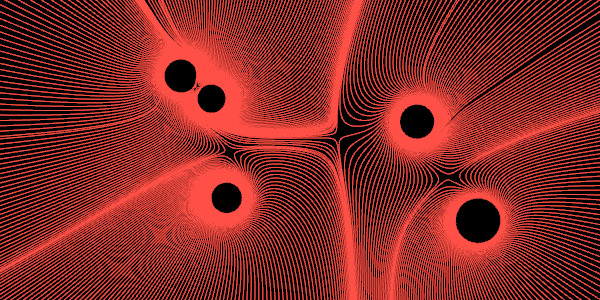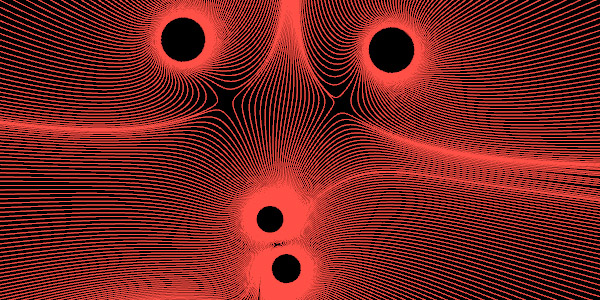Force Fields Revisited
by Tuğrul Yazar | November 2, 2013 22:31
Force fields might be one of the most influential component sets of Grasshopper[1]. Thus it also becomes a de-facto standard design approach like the Voronoi subdivision. There are beautiful examples of this mathematical solution. Here[2] is a good explanation of mathematics underneath, and here[3] are my previous studies. I tried to use the Grasshopper’s force field components and see how it looks like when animated. Thus, multiple spin forces are merged together in this definition. Therefore, the overall effect of field lines creates interesting visuals. Here is the Grasshopper definition:
The definition takes several points for the charges. These points are used as the point and spin charges. Then I merge the charges to create a force field. Then, the definition draws circles around these points and calculates the field lines. Finally, it extends the field lines a bit to improve the result. The original 2013 definition had the animation sequence. It included the moving points via the parametric evaluation of curve paths. Therefore, the below video shows the motion effect. However, I removed that part in 2021 for simplicity. Finally, this can be a good educational example for beginners.
Unfortunately, the video quality is not good. Below are some screenshots showing the effect of force fields. In the future, I am planning to implement this computation without ready-made Grasshopper components. Because I hope I can learn the underlying mathematics of this and similar methods. Firstly, Rhino Python might be a good environment to study and learn vector fields. Then, hopefully, I might understand how advanced methods like CFD. However, the ready-made components are good sources to check the correctness of the calculations in such studies.


- Grasshopper: https://www.designcoding.net/category/tools-and-languages/grasshopper/
- Here: https://en.wikipedia.org/wiki/Vector_field
- here: https://www.designcoding.net/category/research/vector-fields/
- 2013_09_30-spin3: https://www.designcoding.net/decoder/wp-content/uploads/2021/09/2013_09_30-spin3.gh
- Download: https://www.designcoding.net/decoder/wp-content/uploads/2021/09/2013_09_30-spin3.gh
Source URL: https://www.designcoding.net/force-fields-revisited/